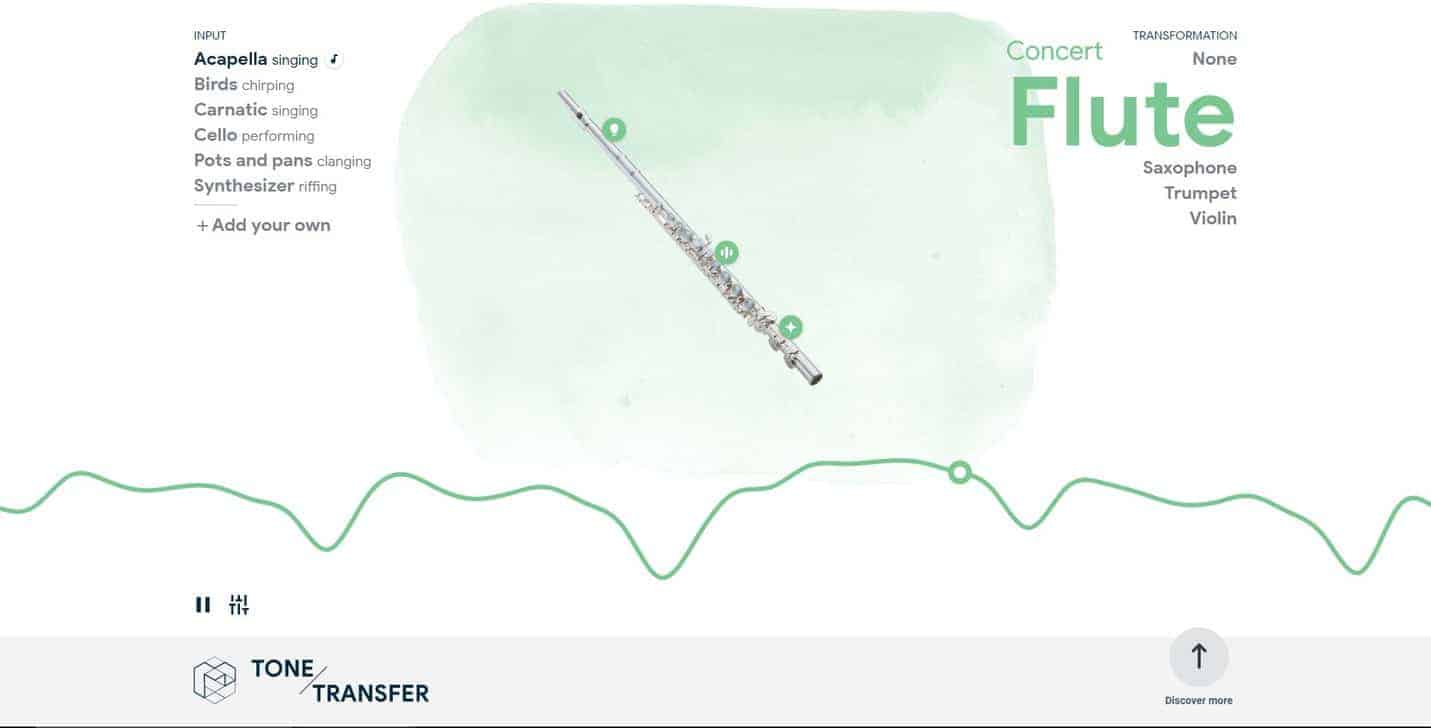Tone Transfer is a free web app that uses Google’s machine learning AI to convert the timbre of any audio file into four different instruments.
It’s pretty easy to get lost in all the alarmist clickbaity titles calling for the end of whatever profession you’re currently doing right now.
Do you work at a cream cheese bagel delicatessen?
See also: Free Music Production SoftwareSorry, buckaroo, AI is coming to take your job in TWO WEEKS! Better start learning how to dig right away. We will all need to know how to do it anyway, once the all-powerful algorithm enslaves us to mine gold for its massive, universe-spanning cables perpetually. Wake up!
OK, I might’ve gotten a bit carried away there.
Tone Transfer By Magenta DDSP
Anyway, a team inside Google has been rapidly developing AI-powered tools to assist musicians, and the results are already pretty striking.
The team is calling themselves Magenta, and they’re developing a good handful of gadgets, but the one that’s got everyone talking is Tone Transfer.
What they’ve done is used Google AI’s machine learning algorithm and trained it to recognize the timbres of a few different instruments – flute, saxophone, trumpet, and violin. For each instrument, the algorithm trained on a 10-minute sound source.
The result is so cool that it’s almost hard to believe at first. Tone Transfer takes any audio source provided by the user, and the algorithm morphs it into one of the four available instruments.
In other words, you can hum a melody, upload it to Tone Transfer, and you’ll hear that same melody played by a violin or a flute. And it actually sounds surprisingly good!
Here is a video of Andrew Huang and other popular YouTubers giving demonstrations of what the software is capable of:

As you can tell, Tone Transfer still has a few kinks to it.
It’s sonically limited to the sample audio it was fed with. The algorithm isn’t flexible enough to fit it in a broader generic context.
Tone Transfer also transfers pitch and amplitude information in a 1:1 ratio. If you input a sound sample that articulates in a way that one of the preset timbres can’t, the algorithm will essentially guess how that would sound and come up with unnatural results.
That could, of course, also be seen as a positive, a way to generate unique performances not possible on a real, physical instrument.
Still, it’s all very impressive, especially considering that this has only been out since October (though Tone Transfer has been in the works for a few years).

The interface is incredibly pleasant to look at and easy to understand, and Tone Transfer can both input and output in fifteen-second snippets.
The sky’s the limit with this one, and it’ll be interesting to see how the timbre recognition algorithm develops. Realistically, if this is as bad as Tone Transfer’s going to get, who knows how much it will improve in the coming iterations?
Will you try using Tone Transfer in your music projects? Do you think that the algorithm is capable enough of delivering results that could rival an orchestral sound library?
More info: Tone Transfer (free web app by Google)
More articles:
- Sonixinema Offers FREE Piano Textures For Native Instruments Kontakt
- U-He’s FREE Zebralette Synthesizer Gets A New GUI
- Monique Virtual Synthesizer By Monoplugs Is Now FREE!
- 99 Sound Effects Is A FREE Sound Library By 99Sounds
Last Updated on October 23, 2020 by Tomislav Zlatic.







